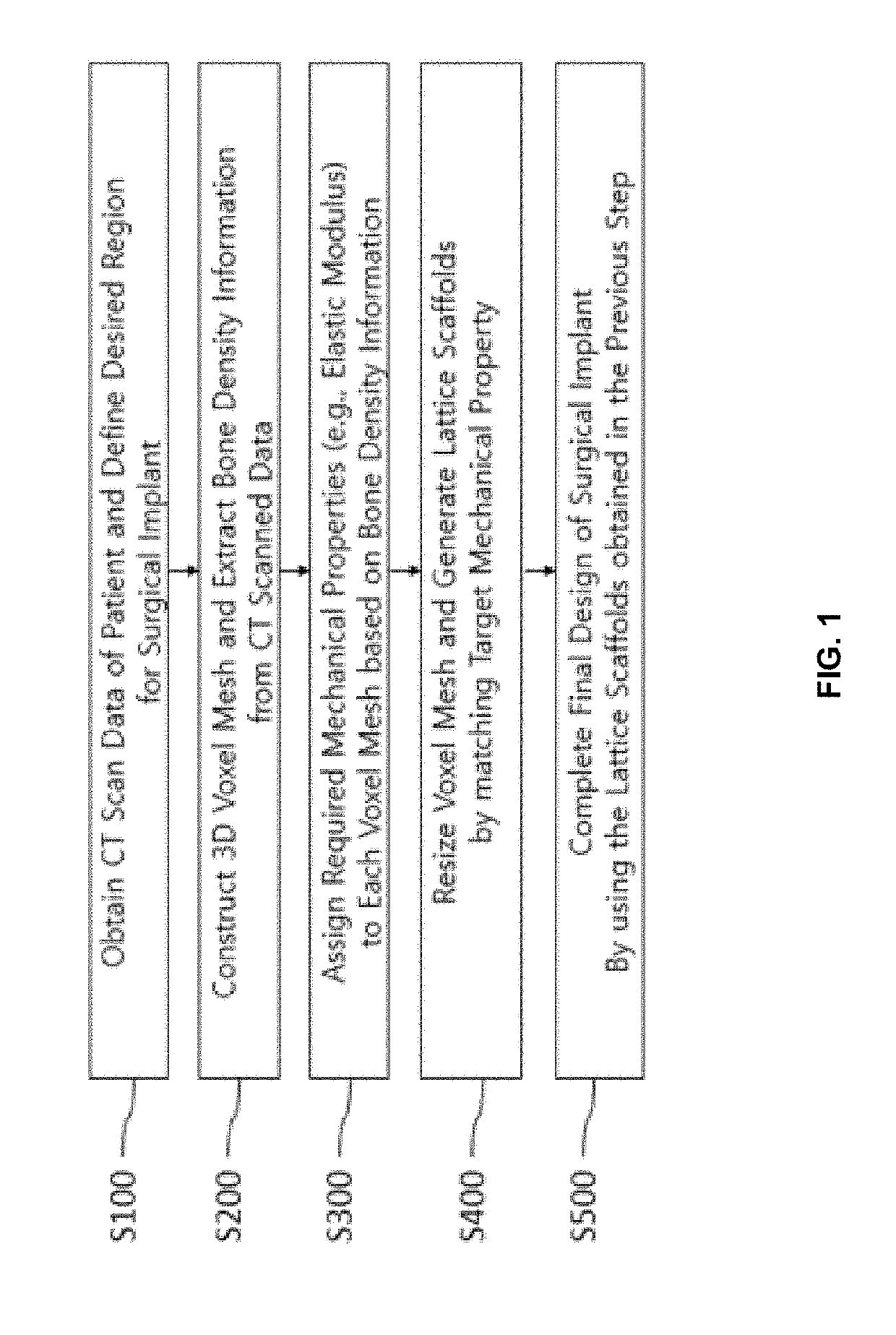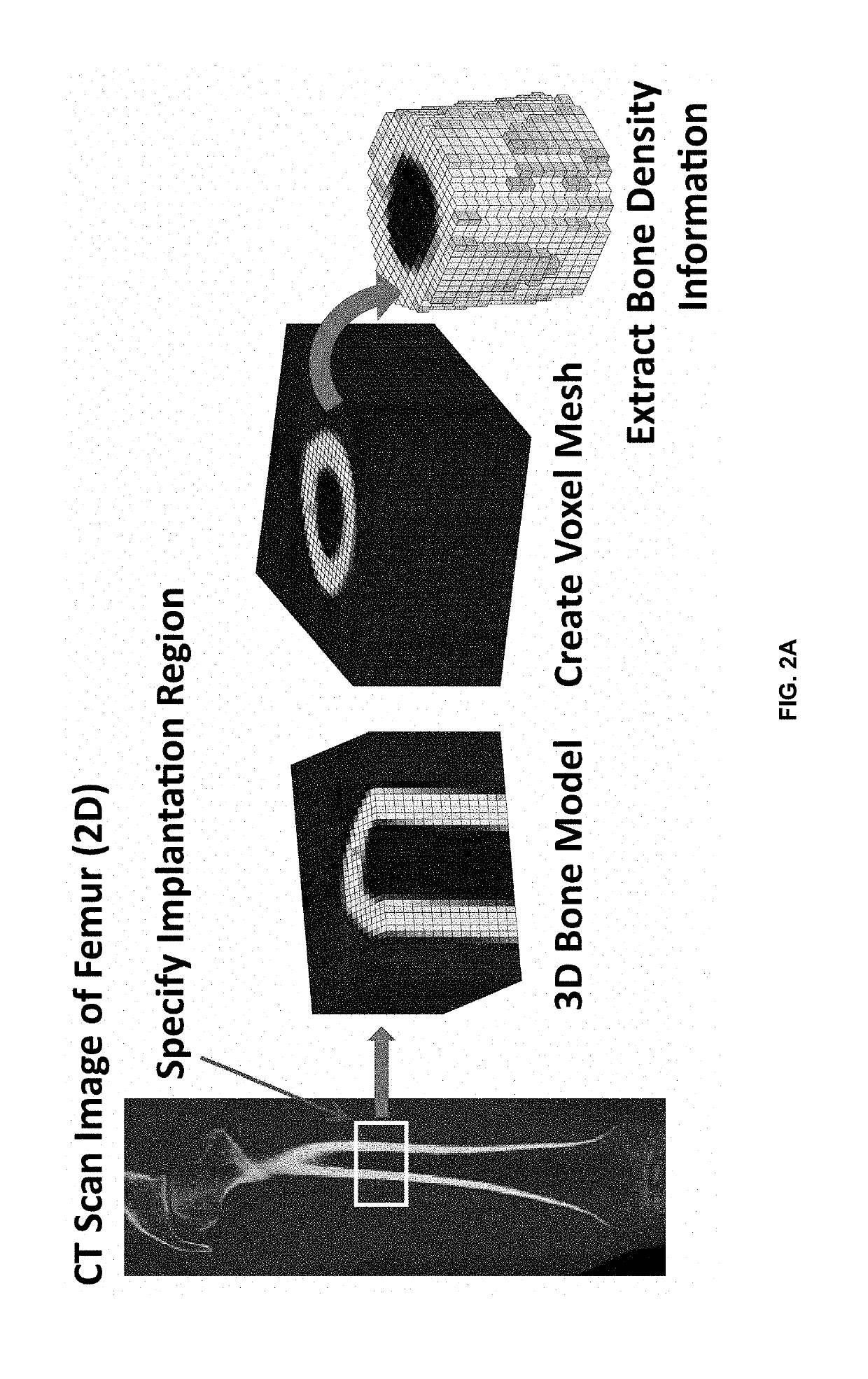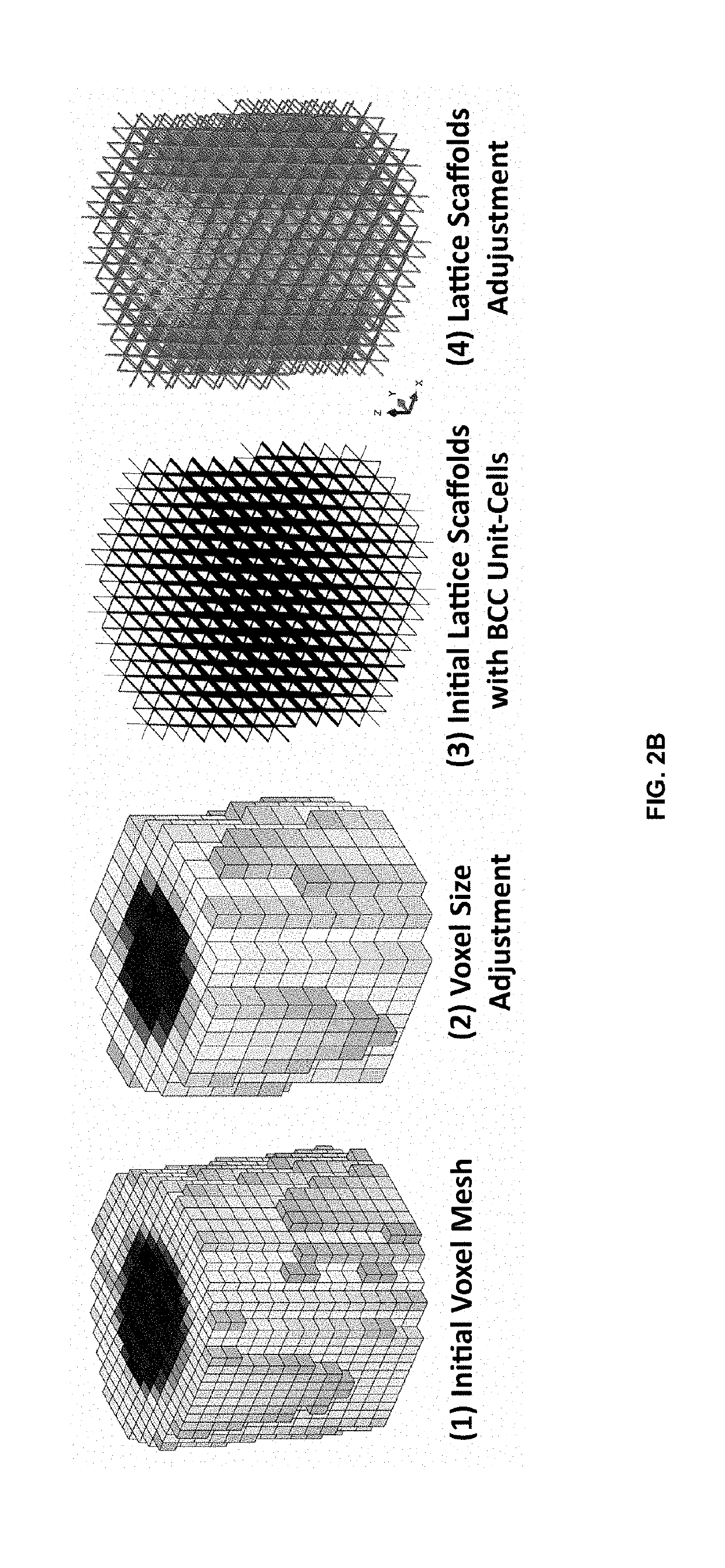Method for adjusting mechanical properties of implant and patient specific surgical implants
a technology of mechanical properties and implants, applied in the field of adjusting mechanical properties of implants and patient specific surgical implants, can solve the problems of large difference in mechanical properties, such as elastic modulus, between the bone and the implant material, and bone deformation and even cracks, so as to reduce the side effect of implants, prevent reoperation, and reduce stress shielding
- Summary
- Abstract
- Description
- Claims
- Application Information
AI Technical Summary
Benefits of technology
Problems solved by technology
Method used
Image
Examples
Embodiment Construction
[0035]Below, embodiments of the disclosure will be described in detail with reference to accompanying drawings so it can be easily actualized by a person having an ordinary skill in the art. The disclosure may be achieved in various different forms without being limited to the embodiments set forth herein. For clarity of description, like numerals refer to like elements throughout.
[0036]As the average life span of human beings has been extended due to the rapid developments of scientific technologies, extensive research work has been done on the development of various implants, including artificial bones, joints, and teeth to treat critical damages of the human body generated from accidents, cancer, stress, obesity, etc. The implants should be non-toxic and be able to maintain their original function in harmony with the living tissues of the affected area. Although significant efforts have been made to develop superior biomaterials for these implants, the elastic modulus of the exis...
PUM
| Property | Measurement | Unit |
|---|---|---|
| elastic modulus | aaaaa | aaaaa |
| elastic modulus | aaaaa | aaaaa |
| elastic modulus | aaaaa | aaaaa |
Abstract
Description
Claims
Application Information
 Login to View More
Login to View More - R&D
- Intellectual Property
- Life Sciences
- Materials
- Tech Scout
- Unparalleled Data Quality
- Higher Quality Content
- 60% Fewer Hallucinations
Browse by: Latest US Patents, China's latest patents, Technical Efficacy Thesaurus, Application Domain, Technology Topic, Popular Technical Reports.
© 2025 PatSnap. All rights reserved.Legal|Privacy policy|Modern Slavery Act Transparency Statement|Sitemap|About US| Contact US: help@patsnap.com



